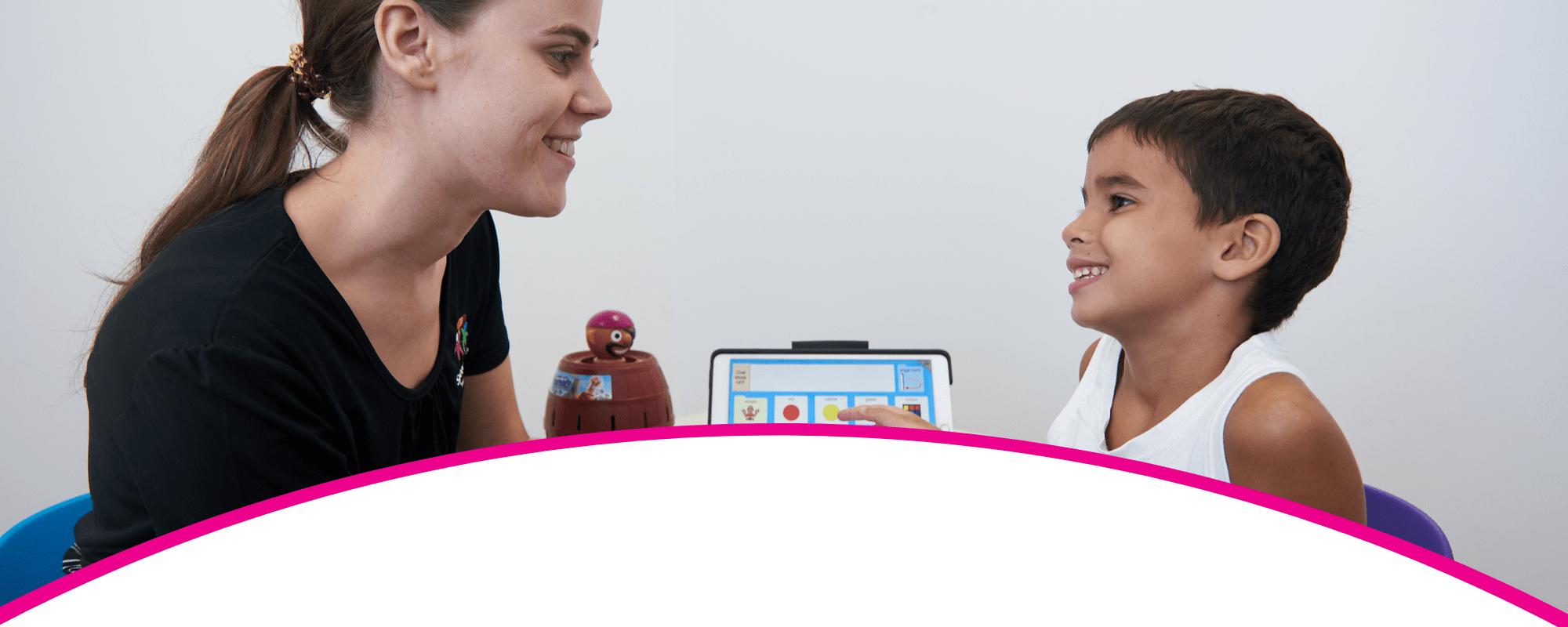We talk for a range of reasons that are important to our wellbeing. We ask for what we need, we tell stories, we share experiences, we discuss… and sometimes we even argue!
But a variety of causes, including learning difficulties, attention deficits and some disabilities, make it hard for kids and adults alike to express themselves verbally. They might not even speak at all. This can lead to frustration and social isolation – after all, we all need to communicate to connect and feel understood.
If you’re concerned about someone who has limited speech development, here’s what you need to know.
Kids all progress in their own time, so the age they start talking and using language can vary. But there are some general speech milestones that most children reach at a similar age.
For instance, many babies can happily babble ‘mummy’ and ‘daddy’ before their first birthday. By 18 months old, little tots are generally using at least 20 words including a range of nouns, verbs, adjectives, and social words such as ‘hi’ and ‘bye’.
When a child is 2 years old, they are usually using at least 100 words, and combining 2 words together in their speech. Some examples of word combinations might be ‘pat doggie’, ‘want cookie’, or ‘all gone’.
By 4 years old, children should be creating sentences 5-6 words long.
There are a wide range of reasons that can cause a child or adult to not speak.
A few of common contributors include:
- Autism – A range of disorders marked by impaired social interactions
- Dyspraxia – A neurological disorder that affects motor skills and cognitive abilities
- Learning disability – Affecting their ability to interpret and understand language
- Non-verbal learning disorder – A neurological condition involving a range of academic and social difficulties
- Phonological disorders – A delay in speech development which can be due to physical disorders of the muscles needed for speech or the way the brain processes sound productions
- Cerebral palsy – A physical condition that affects movement
- Selective mutism – An anxiety disorder causing people to choose not to speak
It’s important to note that children and adults with these (and many other) conditions are otherwise highly intelligent. They just process information differently.
AAC is a term used to describe a range of methods used by speech pathologists to help non-verbal children and adults communicate without speech.
It includes simple mechanisms such as using pictures, gestures and pointing, as well as more complex techniques involving technology to give non-verbal people a ‘voice’ using a speech generating device.
Everyone uses some forms of alternative communication every single day. We might give a ‘thumbs up’, wave goodbye, or point and nod our head. These are all non-verbal signals that we all rely on from time-to-time.
Non-verbal people learn to rely on these (and more) methods of communication to express themselves and be understood.
It’s not only non-verbal people who benefit from learning and using AAC. Difficulty with communication is actually a more common problem than you might think. An estimated 1 in 100 people have significant communication difficulties, and could be helped by some form of augmentative and alternative communication methods.
There are many types of augmentative and alternative communication.
Unaided AAC can include body language, pointing, gestures, facial expressions, sign language, and vocalisations.
Aided AAC involves using equipment that may include paper for writing messages or drawing, alphabet and word boards, books with pictures, or particular objects used to represent what the person wants to say.
Another form of aided AAC is technology-based solutions that need a power source to run. These can range from simple buttons, right up to sophisticated programs on computer tablets.
For people who can’t draw, point, or press keys, there are a range of solutions available. AAC is truly comprehensive! People with a physical disability might use a keyguard, a switch, or even an eye gaze controller.
There’s nothing more rewarding than seeing a person who has been previously unable to communicate begin to express themselves to those around them!
We offer therapy for non-verbal children and their parents to help them build better communication. We use AAC and other methods to help your child communicate more effectively. We can then assist you with sourcing funding to purchase assistive technology that is of benefit if required.
Our More Than Words program educates parents of children with Autism Spectrum and /or Social Communication disorders, providing them with the tools, strategies, and support they need to help their child reach their full communicative potential.
We also offer a structured playgroup for children aged 18 – 36 months who have a limited range of words and speech. Parents who attend this group learn techniques that are aimed at improving everyday interactions with your child to improve their language comprehension and expressive communication skills.
If you’d like to discuss Augmentative and Alternative Communication methods to help your child express themselves, get in touch with SpeechEase. We have speech pathology practices in Brisbane, Mackay, and Townsville.
Call us on 1300 773 273 or register for our services here.

